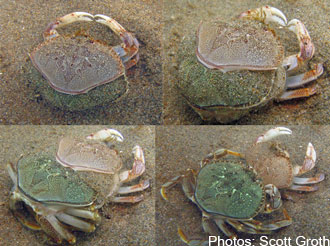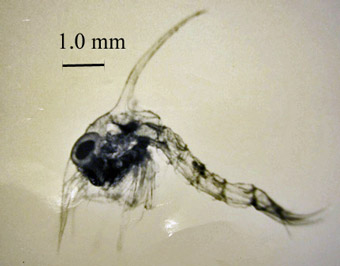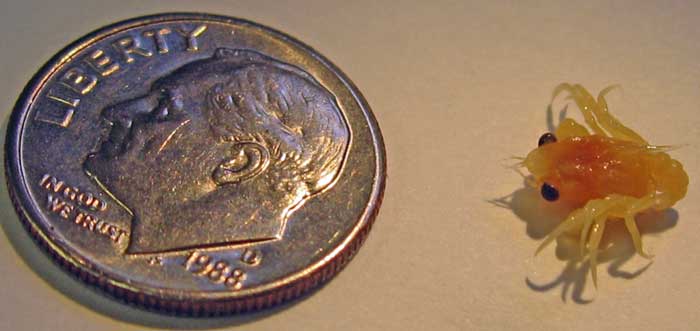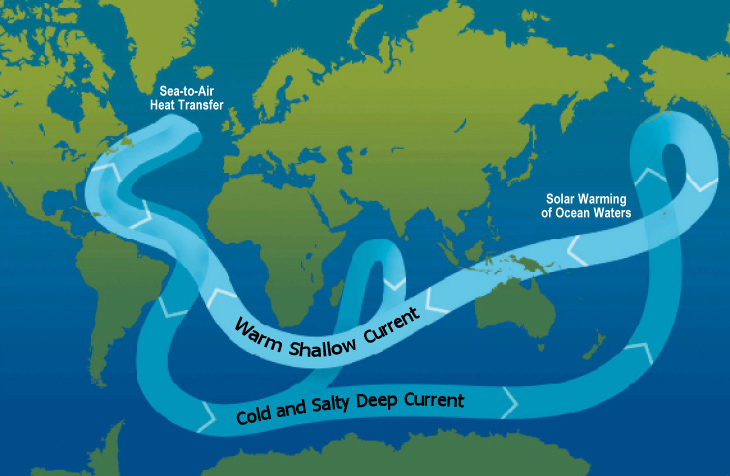Cancer magister, Dungeness crab
Reproduction
Sexual Reproduction
 The male embraces the female belly to belly
and clasps onto her to ensure she will mate with him.
He may clasp on for several days softly stroking her with
his chelipeds. Then finally when she molts,
she will signal the male by nibbiling his eyes.
Once her exoskeleton is off he will insert his sperm.
The male is not monogamous and will go onto other
females. Interestingly, the sperm can be
viable inside the female for several months, and she may use the
viable unused sperm on her second molting.
The fertilized eggs are attached under the abdomen of female for
several months until they hatch as free-swimming zoea.
The male embraces the female belly to belly
and clasps onto her to ensure she will mate with him.
He may clasp on for several days softly stroking her with
his chelipeds. Then finally when she molts,
she will signal the male by nibbiling his eyes.
Once her exoskeleton is off he will insert his sperm.
The male is not monogamous and will go onto other
females. Interestingly, the sperm can be
viable inside the female for several months, and she may use the
viable unused sperm on her second molting.
The fertilized eggs are attached under the abdomen of female for
several months until they hatch as free-swimming zoea.

Typical life cycle
First stage: free swimming larval zoea which will last for about 2-3 months which is variable on temperature(explained below in greater detail). The image shows how small the zoea really are.
Second Stage:
megalope, where the zoea form has
turned into something that resembles a small crab. The megalope
will eventual molt into a juvenile crab which takes about a
year. The image shows the megalope form.
form.
Last two Stages: These include being a juvenile for 1-2 years and then a sexually mature adult for 2-6 years. On average the whole life cycle of the Dungeness crab taking about 8 years. The image shows the adult crab.
The reproductive events for the Cancer magister vary based on their latitudinal location. Reproduction occurs earlier for southern populations than for the northern.
In southeast
 The Dungeness off the coasts of
The Dungeness off the coasts of
Climate changes such as El Niño in 1997-98 and local cold events in 2002 had dramatic effects on the embryonic rate of development. Studies have shown that temperature is directly proportional to how fast the larvae will develop. The warmer the water the faster and the colder the longer it takes.
Many adult Dungeness crab move very little and live with in relatively the same habit their whole life. However, the Cancer magister has a long larva stage of about 3 months where they are moved by water currents or winds. This allows for long distance dispersal of the crabs ranging from north to south. This transportation or called the conveyor belt, allows for gene flow between the northern and southern populations of crabs.
Next, look at the Interactions of the Dungeness crab.



